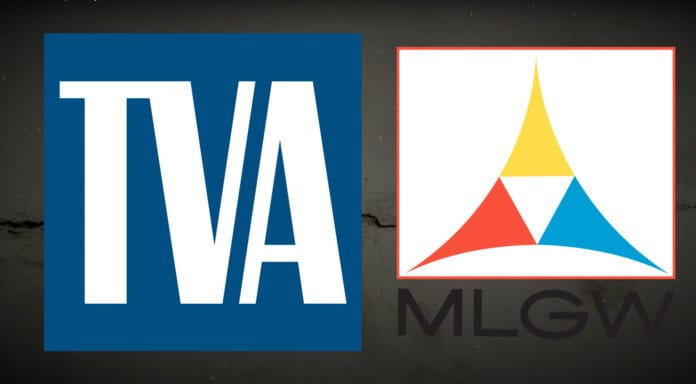Jeff Lyash, president/CEO of Tennessee Valley Authority (TVA), says the costs for Memphis Light, Gas & Water (MLGW) Division to switch to a new electric supplier is underestimated by $261 million in extra annual costs.
Electric bills could rise more than 20 percent under this scenario, he said.

In a letter dated Tuesday, June 23 to MLGW President/CEO J.T. Young, Lyash said costs not reflected in the draft report by Siemens consultants would void any future savings for MLGW.
The draft report, issued to MLGW in May as the Integrated Resource Plan (IRP), compared options for supplying electricity to customers over the next 20 years.
The IRP concludes that switching from TVA to Midcontinent Independent System Operator (MISO) could save MLGW $150 million to $200 million annually versus a TVA savings of $120 million per year.
Earlier reports by groups in support of switching to a new electric supplier indicated a savings from $453 million $547 million annually.
MISO supplies electricity to 15 states across the U.S., plus Canada, and is larger than TVA, which supplies power to 10 million people in seven states. Memphis is TVA’s largest customer.
The IRP recommends that MLGW generate some of its own electric power to reduce dependence on outside sources and increase its savings capacity.
TVA estimated the cost for MLGW to construct electric power and transmission at $8 billion.
“Although we are aligned with much of the analysis, we believe that critical assumptions, such as construction costs and schedules, capital recovery costs and ongoing operating expenses are understated in the IRP,” Lyash said in the letter.
He also says the plan’s projected TVA rate increases over the next 20 years are overestimated by $55 million.
TVA’s base rate would not change over the next 10 years, according to Lyash.
TVA is expected to present its own 20-year plan to MLGW by early July. That report will include data calculations and details, and promises an economic development component geared toward urban core neighborhoods.
Once the IRP draft report is finalized – and TVA’s plan is presented – Young is expected to make a recommendation to the MLGW board of directors in late July or early August.
Switching to MISO would end MLGW’s 80-year partnership.
TVA maintains that it provides the third lowest rates in the nation among its peers and touts a $72 million investment in Memphis-area infrastructure, producing 40,000 jobs.
The federally-owned utility said its power supply is 55 percent carbon-free and provides more renewable energy than MISO or any Southeastern U.S. utility company.
Public opinions about the draft IRP have ensued in recent weeks.
The invitation for opinions continues through early July.

Scott Banbury, conservation program coordinator for the Sierra Club’s Chickasaw Group, has contributed a voice to the power issue.
Banbury’s group represents 1,000 members in Memphis and West Tennessee.
“We’ll support whatever supplier adopts renewable energy providing the greatest savings for Memphis,” he said.
“The savings should come back to energy-burdened customers. Some people pay over 25 percent of their income on energy bills.”
Banbury stresses the need for more funding in low-income energy efficiency programs.
Pearl Eva Walker, organizer of Memphis Has the Power, said TVA is downplaying the potential savings shown by several studies in recent years, including the IRP.

“There is no basis for TVA’s numbers,” Walker said regarding TVA’s response to the IRP.
“TVA charges Memphians about a billion dollars per year and we’re their largest customer. So, it’s no surprise that TVA says that Memphians should keep buying power from them despite that Memphis has the highest energy burden in the country.”
The IRP says MLGW should extend request for proposals (RFPs) to energy suppliers to confirm Siemens’ 20-year energy cost estimates.
Walker says this step must and will be taken before any decisions are made.
“We’ll just have to wait on the RFPs to see what the market will bear.



